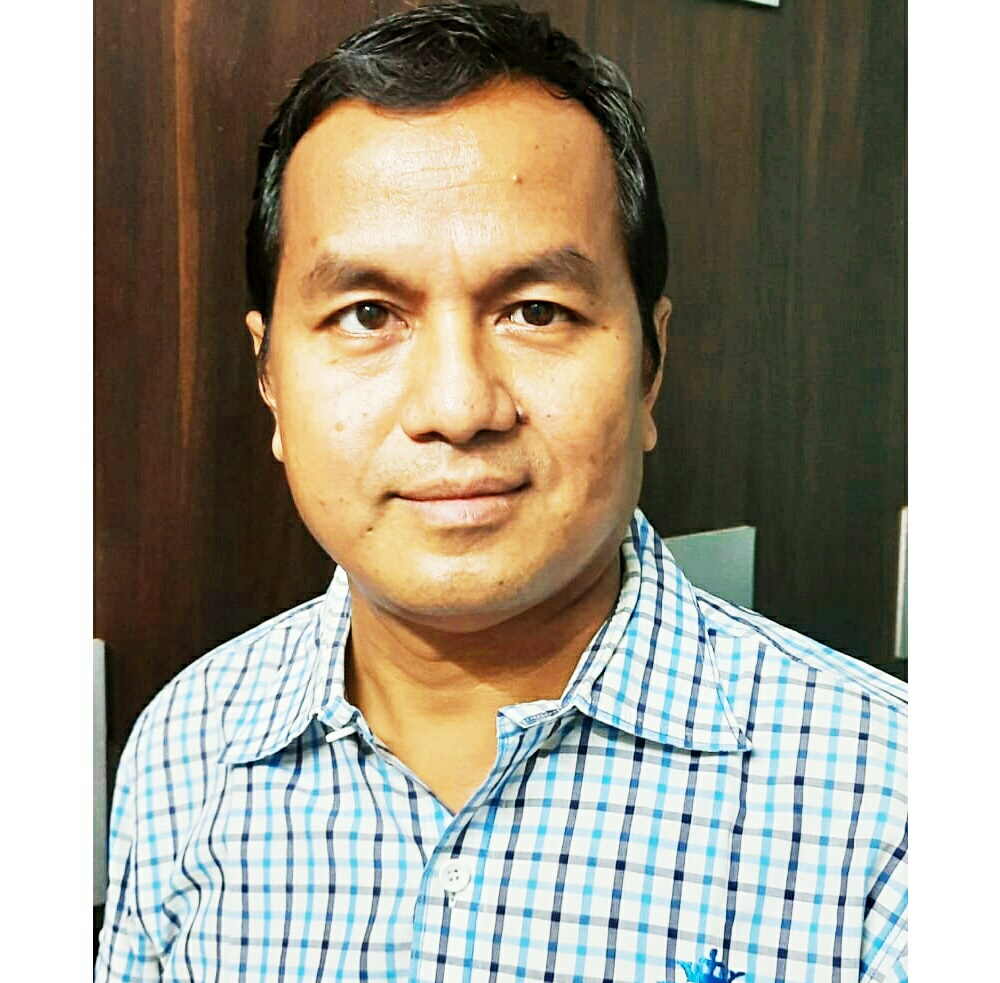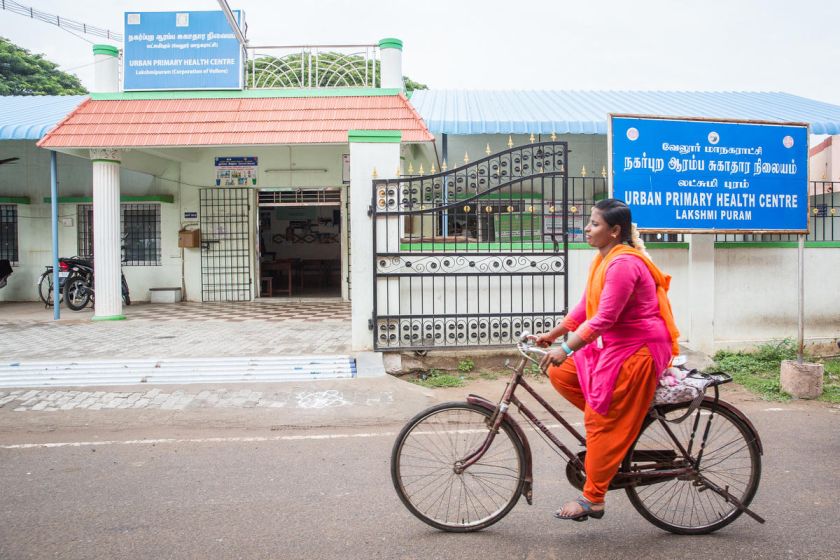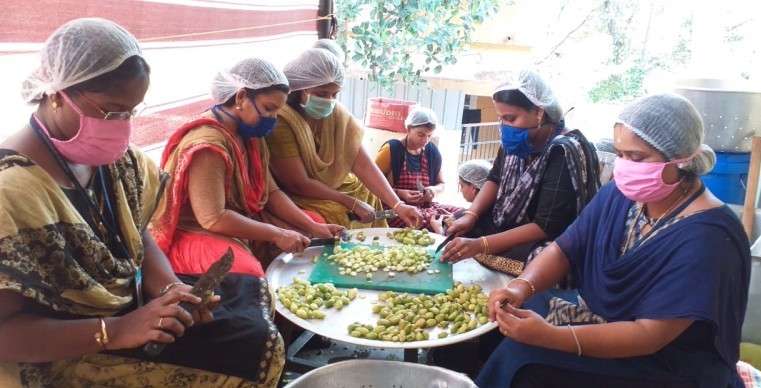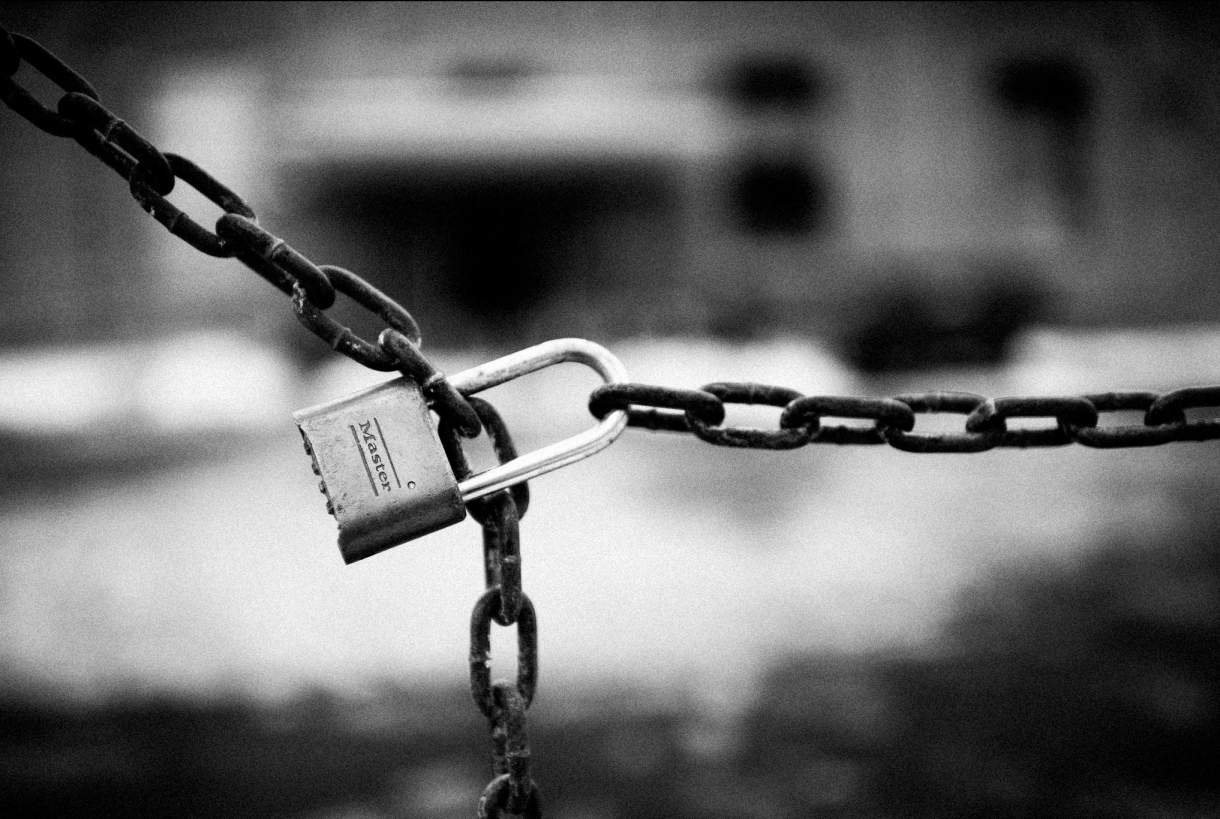The total population of Northeast India is 46 million, which is about four percent of the national population. With only about 0.26 percent 1 of the reported COVID-19 positive cases across the country, the region seems to have done well so far in containing the spread of the virus. This statistic especially stands out in the light of several reported cases of racial discrimination towards its people, who are being targeted as suspected carriers of the virus in many Indian cities.
The reasons for the lower numbers of reported cases can be attributed to a few factors:
Customary laws
All the states in the region are a confluence of multi-ethnic groups, with as many as 220 different ethnic groups across the eight states. Except the valleys of the Brahmaputra, the Barak, the Howrah, and the Imphal, all other places are predominantly inhabited by tribal people, with a fair degree of diversity and autonomy even within these groups.
The Northeast accounts for only about 0.26 percent of the reported COVID-19 positive cases across the country.
In rural areas, each village is normally inhabited by only one tribe, and they follow the customary laws of the community. As a regular practice, for example, for a Chakhesang tribal to enter into an Angami tribe village, they have to take permission from the headman of the Angami village. This system of self-regulated isolation has helped impose physical distancing norms effectively in vast rural areas of the Northeast during this crisis.
Poor healthcare system
The healthcare system in the Northeast is relatively weak. There are a total of 476 medical colleges across India; this figure is only 11 for the entire northeast region, as per National Health Profile Report 2018. While Mizoram and Arunachal Pradesh got their first ever medical college in last two years, Nagaland still does not have a single medical college. The poor medical infrastructure of the region is also reflected in the low number of COVID-19 testing centres: There are only 11 testing centres—six in Assam (including one of the Indian Council of Medical Research’s (ICMR’s) Regional Medical Research Centre at Lahowal, Dibrugarh district); one in Meghalaya; one in Tripura; and two in Manipur. Mizoram added a centre for COVID-19 sample testing in Aizawl on April 6th. The low numbers of people being tested may also be one reason why fewer cases are being reported from these states.
Strong local institutions
An important part of the social life in the region is the presence of diverse local institutions. Some are built around identities, such as the Naga Hoho in Nagaland; many however, are based on various other aspects, such as working against drugs and alcoholism through Meira Paibis in Manipur, volunteerism by the Young Mizo Association, organising cultural events for Bihu and Durga Puja by local clubs in the plains of Assam and Tripura, in addition to the various students’ associations across these states. Historically these institutions have played an important role in introducing and managing norms in their communities. They are now playing a critical role in combating the COVID-19 pandemic in the region by enforcing social regulations—such as physical distancing—and ensuring cooperation amongst various ethnic groups and other stakeholders.

Source: Magzter
Related article: Look east. And invest there.
Community resilience in the time of COVID-19
In an urban settlement of Ramnagar, in Agartala, Tripura, Mukti Sangha, a local club which normally organises cultural and sports events, started working with residents to ensure that people stay at home during the lockdown. They started a WhatsApp group comprising all the households in their localities. This was used to identify their everyday needs and supply it to their doorsteps so that no one had to go out. Members would place their daily orders of vegetables, grocery items, medicines, and so on, which volunteers of the club would then deliver to the registered member’s doorstep with the help of various third-party agencies such as the Tripura Police and local merchant associations.
In parts of rural Tripura, as soon as the national lockdown was announced, villagers put up barricades to regulate the entry of outsiders. They closed village entry points and ensured that only those outsiders who come for urgent work would be allowed to enter the village, with proper verification and after ensuring that they underwent a mandatory handwash process.
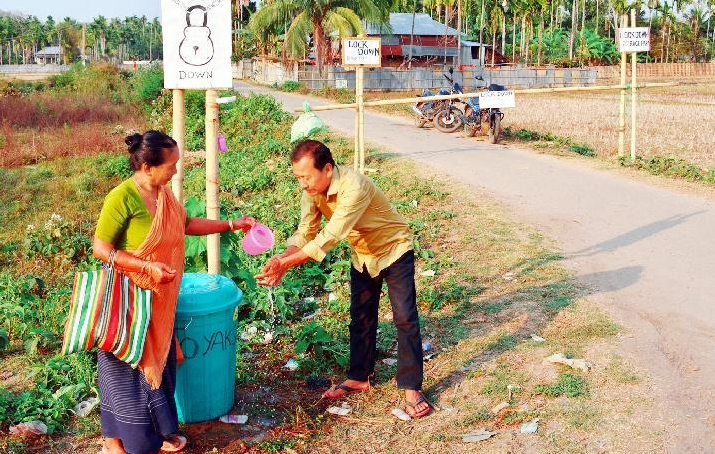
Villagers ensuring hand wash for outsiders in Bairagipara, Tripura. | Picture courtesy: The Daily Desher Katha
In Mizoram, the state government has enlisted the help of its citizens in the fight against COVID-19 by involving civil society, local churches, and local offices of the Young Mizo Association (one of the most influential apolitical bodies in Mizoram) to ensure the lockdown in the state.
A local-level task force (LLTF) has been formed in each locality. These LLTFs ensure that the lockdown works through a series of measures—ensuring physical distancing, catering to the people’s immediate needs for essentials, ensuring no panic-buying happens, and that shopkeepers charge no extra money. The efficacy of these LLTFs can be gauged by the fact that there are almost no police personnel in these localities to enforce the lockdown, and the communities are governing themselves.
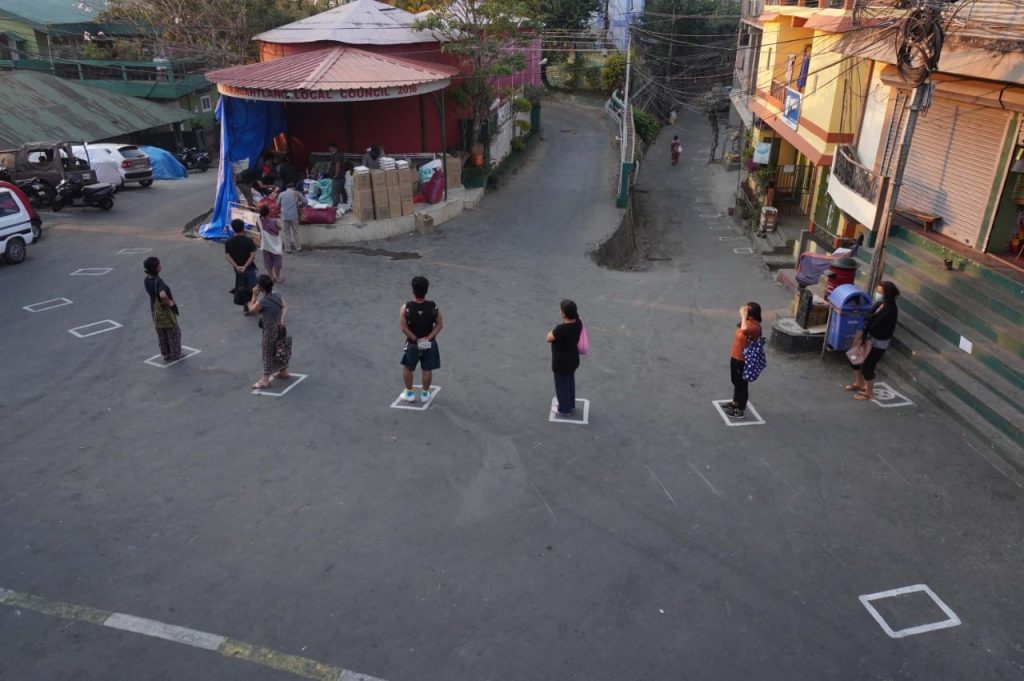
Measures taken to ensure physical distancing in Tuikhuahtlang locality, Mizoram. | Picture courtesy: Mizohican
The LLTF goes around the locality in a pick-up truck, distributing free vegetables to those who are in need. These vegetables are bought with money donated by people of the same locality. In some cases, vegetables are also donated by wealthier people outside the area.
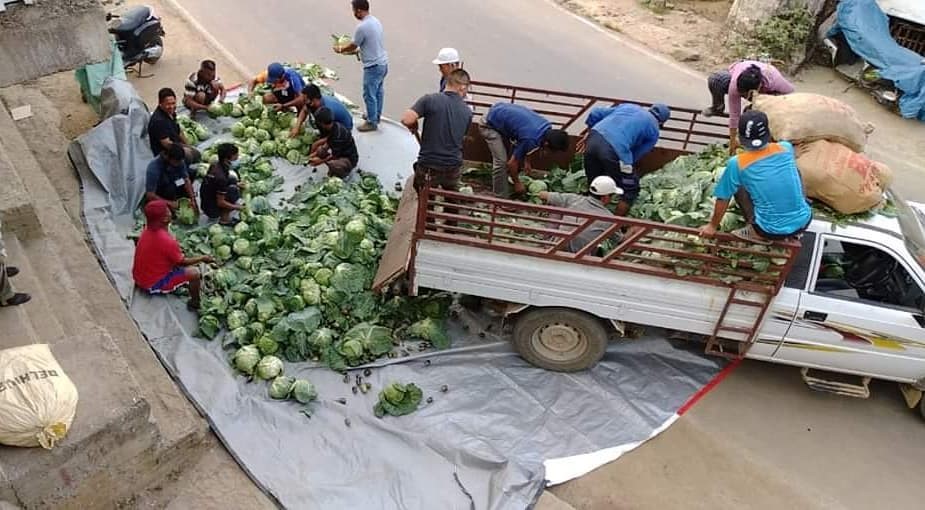
Vegetables being donated for free to people who need them in Mizoram. | Picture courtesy: Mizohican
With all borders being sealed early on in the lockdown, it was hard for transportation to reach different villages in Manipur. As a result, there was a shortage of vegetables in villages in the plains.
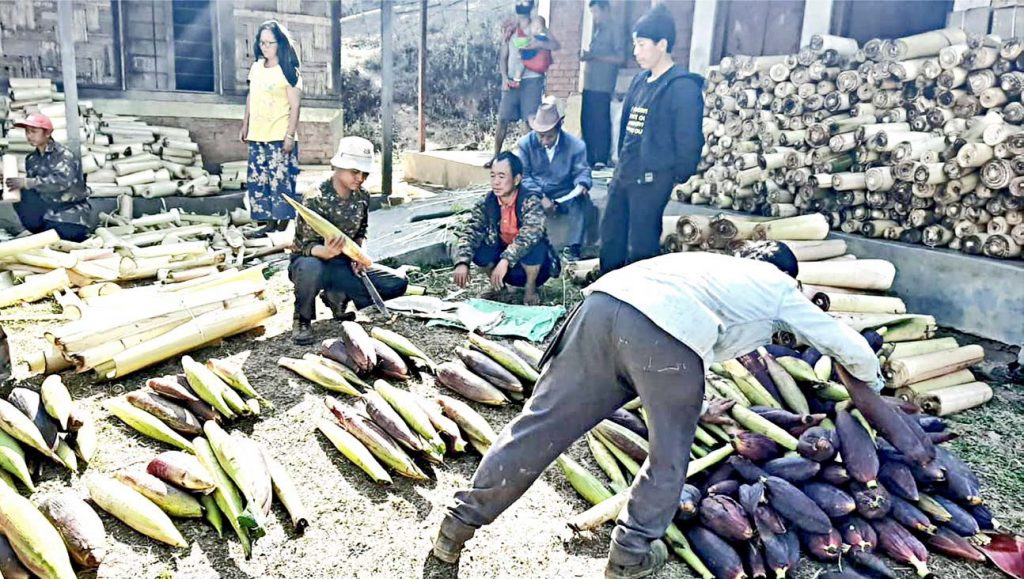
Villagers from Konsakhul readying vegetables to be supplied for free to villages in the plains. | Picture courtesy: The Imphal Free Press
In the hills, several villages produce vegetables locally and don’t have to rely on external supply. When the people of Konsakhul, a village in the hills of Kangpokpi district of Manipur, came to know that villagers in the plains were suffering due to the shortage of vegetables, they (the Liangmai Naga community) started supplying vegetables to nine villages in the plains—Champhai (Vaiphei), Mission Veng, Leimakhong Chingmang, Kanta Sabal, Loitang Khunou, Moibung Khunou, Senjam Meitei, Chirang, and Cooperative Veng. All these villages comprise the ethnic groups of Kuki and the Meitei.
This inter-group support is striking because most of the states in the region have often witnessed conflicts between different ethnic groups.
This inter-group support is striking because most of the states in the region have often witnessed conflicts between different ethnic groups, some of which have resulted in bloodshed, like in Tripura in 1980 and the Manipur hills in 1992. The latest such conflict was reported from Chassad village in Manipur only a few weeks prior to the national lockdown.
In a resource-poor region where the public health delivery system and medical infrastructure are not adequate, it becomes imperative for communities to take the lead in combating the pandemic by ensuring social norms are maintained. With the presence of strong social institutions, communities in Northeast India have demonstrated that, in collaboration with local government, they can play a critical role in arresting the pandemic.
- Calculated from the COVID-19 India tracker, as of 12:50 PM, April 22nd, 2020.
Disclaimer: Views expressed by the author are personal.
—
Know more
- Read about how people from the Northeast are being racially discriminated against in cities during the COVID-19 crisis.
- Learn more about how local communities in Mizoram are taking the lead in COVID-19 prevention.
- Read about how initiative taken by villakers from Konsakhul has been replicated by other communities in Manipur.
Do more
- Seek out local-level organisations working on COVID-19 relief efforts in the Northeast and see how you can support them.


